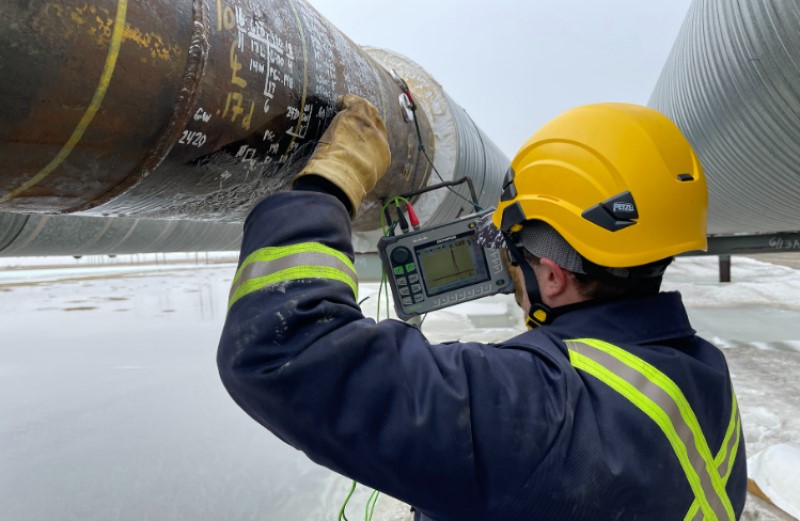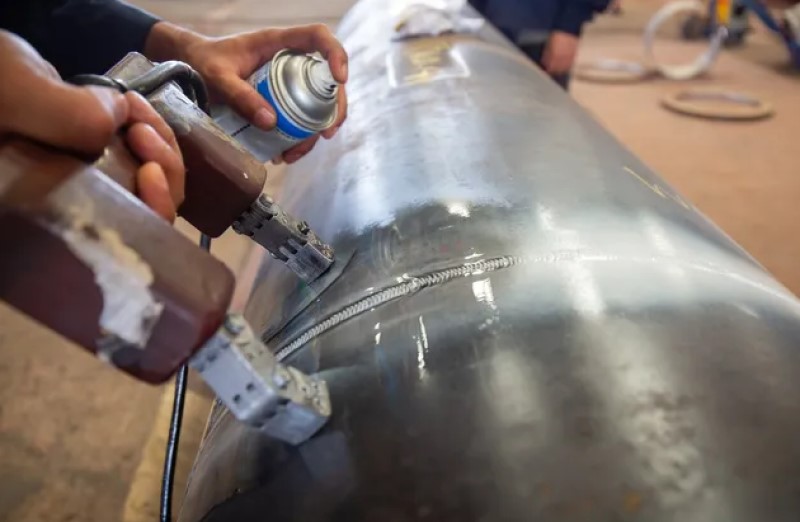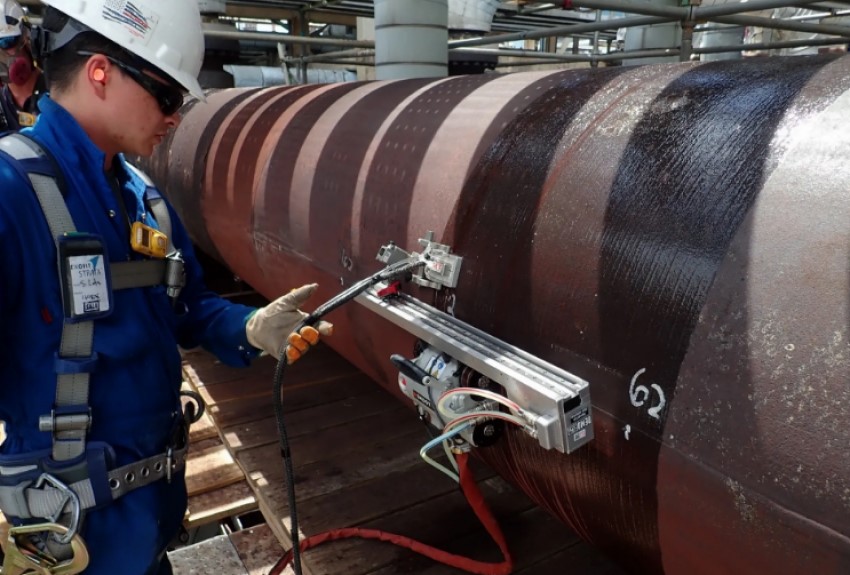In this blog post, weldfaq will discuss some welding joint testing techniques and tools that can be used to improve quality assurance. By understanding how to test welding joints, you can ensure the quality of your welds and avoid potential problems down the road.
Introduction to welding joint testing
Welding joint testing is an essential process to ensure the quality and integrity of welded structures. Welding can create strong bonds in metalworking, but it can also cause defects in the weld joint that may weaken the structure. Welders can find these flaws using non-destructive testing (NDT) and correct them before they create any issues.
Weld joint testing evaluates the welds without causing damage and saves time and money. It involves evaluating the weld using remote visual inspection (RVI), X-rays, ultrasonic testing, and liquid penetration testing.
There are many standards for weld joint testing, including AWS, API, ASME, MIL-STD, NAVSEA, APS, and PED/EN, and weld joint testing companies like Applied Technical Services specialize in evaluating pipe and plate coupons in compliance with these standards.
Methods of welding joint testing
Welding joint testing is an essential step in ensuring the integrity and strength of welded joints. There are different methods of testing, and these can be broadly classified into two categories: destructive testing and non-destructive testing.
Destructive testing methods involve damaging the test piece to a greater or lesser extent, rendering it unusable for further applications. Common destructive testing methods for welded joints include fracture testing, bend testing, macro testing, and tensile testing. These methods evaluate the mechanical properties of the welded joint, such as its strength, toughness, and ductility.
Non-destructive testing (NDT) methods, on the other hand, evaluate the quality of the weld without damaging the test piece. NDT techniques include visual testing, liquid penetrant testing, magnetic particle testing, radiography testing, ultrasonic testing, and eddy current testing. These methods allow welders to detect defects in the weld joint and fix them before they cause any problems. NDT methods are especially useful for inspecting large and complex welded structures, where destructive testing may not be practical.
Other methods of welding joint testing include creep testing, fatigue testing, impact toughness testing, hardness testing, high strain rate shear testing, residual stress analysis, wear testing, shear testing, weldability testing, sectioning, welding, machining, hole drilling, and bend strength testing. These methods can provide more detailed information about the mechanical properties and performance of the welded joint.

Tools for welding joint testing
In-Line Weld Test tools: These tools provide double block and bleed isolation, which creates a verified vapor barrier that allows hot work activities to take place safely onsite. They are commonly used as flange weld testers.
Visual inspection, radiographic inspection, ultrasonic inspection, magnetic particle inspection, and liquid penetrant inspection: These are the five most common methods used for inspecting welds. Each method has its advantages and disadvantages, so choosing the correct method for each application is essential.
NDT, tensile tests, bend tests, impact tests, macro examination, and hardness tests: These are some of the tests that can be performed on a butt weld joint to determine its quality, strength, hardness, and ductility. These tests can be used to determine the acceptability of the weld.
Welding joint testing: Guidelines for procedure and execution
Verify the correctness of the welding joint type, bevel angle, root face, root opening, alignment, and mismatch, and dimensions of the base materials, filler metal, and weld joint. Piping socket welds should have proper gap. Preheat equipment and technique should be acceptable, and the preheat coverage and temperature should be correct.
To qualify welding of grades 36, 50, 50S, and 50W using 50W material, the test plate must have a minimum of 0.15% carbon or a minimum carbon equivalent (CE) of 0.45% with the carbon not less than 0.12%. Check the material test report (MTR) for the percentage of carbon.
Non-destructive testing (NDT) technologies are essential for identifying discontinuities from different types of welds. The quality of testing procedures highly depends on the ability of NDT technologies to identify these discontinuities.
Overall, it is important to follow specific guidelines and procedures when executing welding joint testing to ensure accuracy and reliability in identifying potential issues or discontinuities.

Frequently asked questions (Weld FAQ)
Why is welding joint testing important?
Welding joint testing is important because it helps ensure that the welded joint is strong, durable, and safe for use. It helps detect defects and flaws in the joint, such as cracks, porosity, and incomplete fusion, which could compromise the integrity of the joint and lead to failure or accidents.
How is visual inspection used in welding joint testing?
Visual inspection involves visually examining the welded joint to detect defects such as cracks, porosity, incomplete fusion, and undercutting. It is the simplest and most common method of welding joint testing and can be used for most types of welds.
What is radiographic testing in welding joint testing?
Radiographic testing involves using X-rays or gamma rays to inspect the internal structure of the welded joint. It can detect defects such as cracks, porosity, and incomplete fusion that may not be visible through visual inspection.
Who is responsible for conducting welding joint testing?
Welding joint testing should be conducted by a qualified inspector who has been trained in the specific testing method being used. The inspector should be familiar with the applicable codes and standards and be able to interpret the test results accurately.
Wrapping It Up
Welding joint testing is a crucial process in ensuring the quality of welded joints in metal construction. Several techniques and tools have been developed to improve the quality assurance process. However, it is important to note that the implementation of a welding quality management system is necessary to ensure the reliability and accuracy of the testing process.

